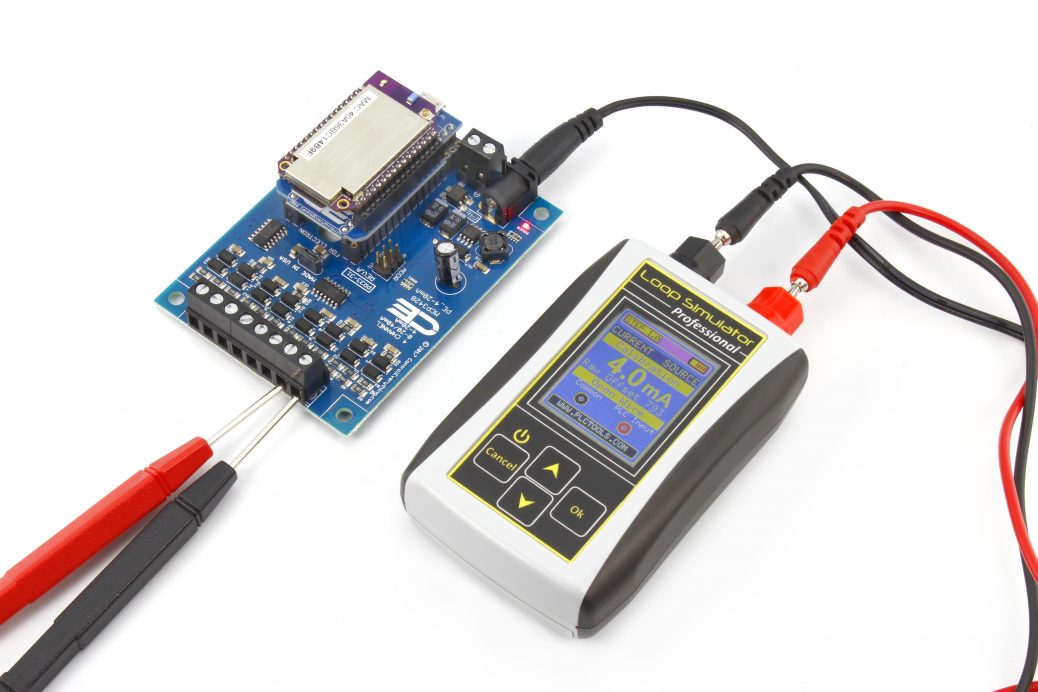Omega2 with Industrial 4-20mA Sensors
-

The Onion Omega 2 is one of my favorite SBCs. It’s small and comes with a ton of power. There are so many neat and interesting projects that can be done with
this computer. In this guide, I will show you how to use the Onion Omega with 4-20mA industrial sensors.About 4-20mA Sensors
4-20mA sensors are a powerful communication standard, commonly found in industrial applications. 4-20mA sensors use current variations to send data. Current variations can travel long distance because current does not decay over distance.Why is 4-20mA the Standard Current Range?
I have seen this question asked so many times, but there is a really easy answer for this. Put simply, a current sensor needs to use 4mA for a Zero reading rather than 0mA. If 0mA were used for the zero value, there would be no way to detect a sensor malfunction vs. a broken wire. Using the standard 4-20mA current range, a broken wire will indicate 0mA. A working sensor will load the current on the line to 4mA (minimum), indicating the sensor is active and ready to go to work. This has been an industry standard for many years, making it easy to troubleshoot a long-distance wiring problem vs. a remote sensor problem. The 4-20mA standard really has nothing to do with 420, it’s just a just a “happy” coincidence!There are many industrial sensors which come with 4-20mA output. The most common are distance sensors, pressure sensors, temperature sensors, flow meters, weight sensors, and much more. In this tutorial, we will learn how we can read all these complex industrial sensors using the Onion Omega and an NCD 4-Channel 4-20mA current receiver board.

The onion omega python lib for reading 4-20mA can be found over here4-20mA board reading with no input attached

4-20mA Bord readings with input attached
The complete project details can be found over here as well Omega 2 4-20mA Project
-
Cool project!
Is the hardware open?
-
@Anil-bhaskar hello. thanks for the explanations. it is understandable that the minimum would be non-zero to differentiate between signal/no signal however can you explain why 4mA instead of 2mA or other small current factor value?
-
@valerionew i don't have any sch.. i wrote the python lib and it's available on github...
-
@Douglas-Kryder its really really good questions, there are few reasons
- this is a very old technique to read sensors and at that time the chips which are used to read pressures or any other data used to consume 3mA. this was a two wire protocol so the current has to be greater than 3mA to make it work
then the second question will why 4 they could have started with 5,10,20 or something else
-
in this protocol the values change linear, so they have to have some thing like this 4-20mA or 5-25mA or 10-30mA or 10-40mA something to make calculation real easy.
-
human body can take up to 30mA current above that it could damage the heart, so they had to keep it below 30mA.
so now we left with 2 choices either 4-20mA or 5-25mA. according to me, there could be two reasons
a. in case of 5-25mA the 25mA was still really close to the max limit of 30mA, so they went with 4-20mA standard.
b. or the people who defined this protocol were real 420 friendly, so they made 4-20mA as an industry standard.
-
@Anil-bhaskar said in Omega2 with Industrial 4-20mA Sensors:
The 4-20mA standard really has nothing to do with 420, it’s just a just a “happy” coincidence!
b. or the people who defined this protocol were real 420 friendly, so they made 4-20mA as an industry standard.
"420"
Let me know what are you talking about please.
-
april 20th is a long mythical [since 1971 at least] day of celebration for marijuana smokers. Anil, thanks for the explanation of the circuit, i was unaware of currents affect on human heart was so low.